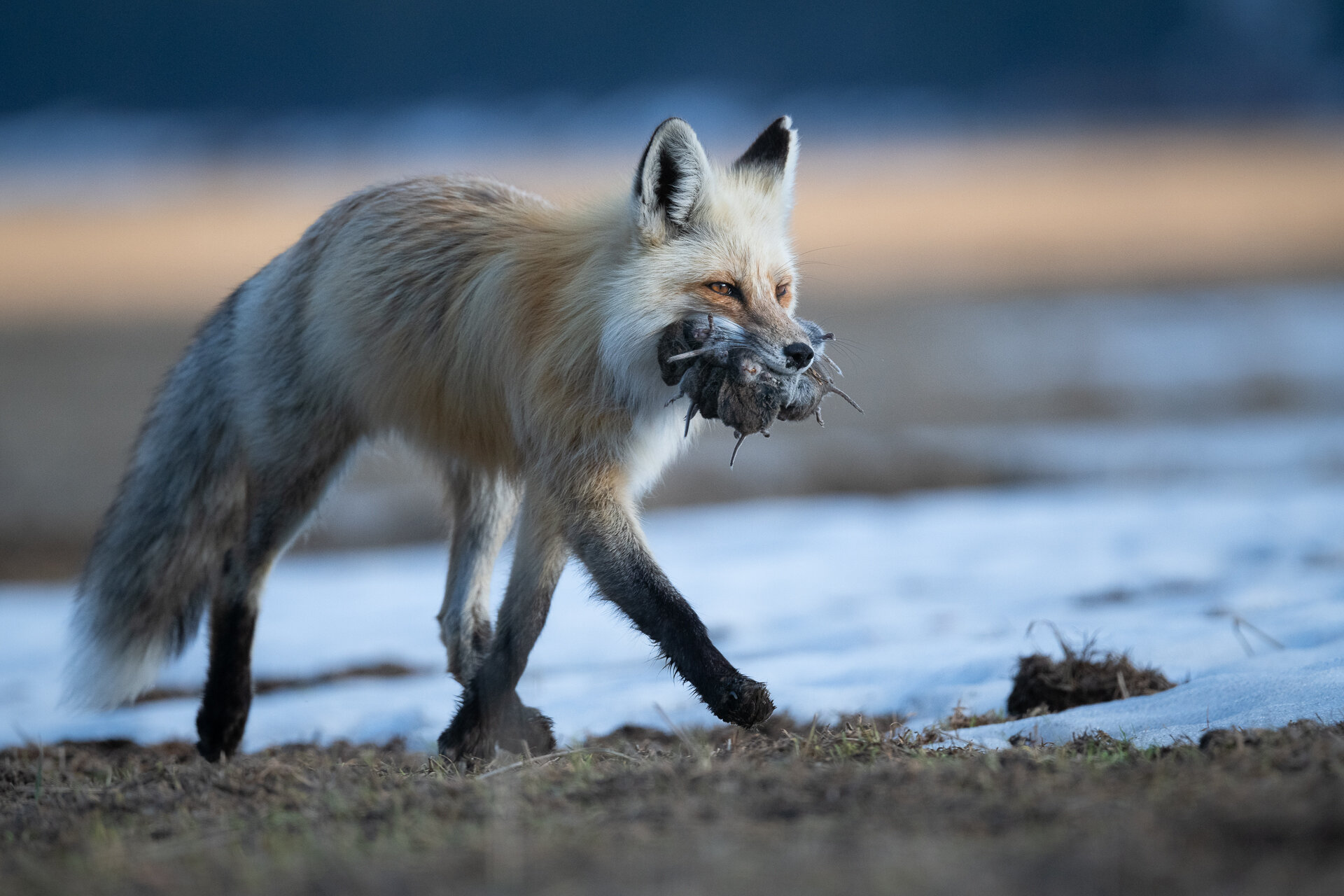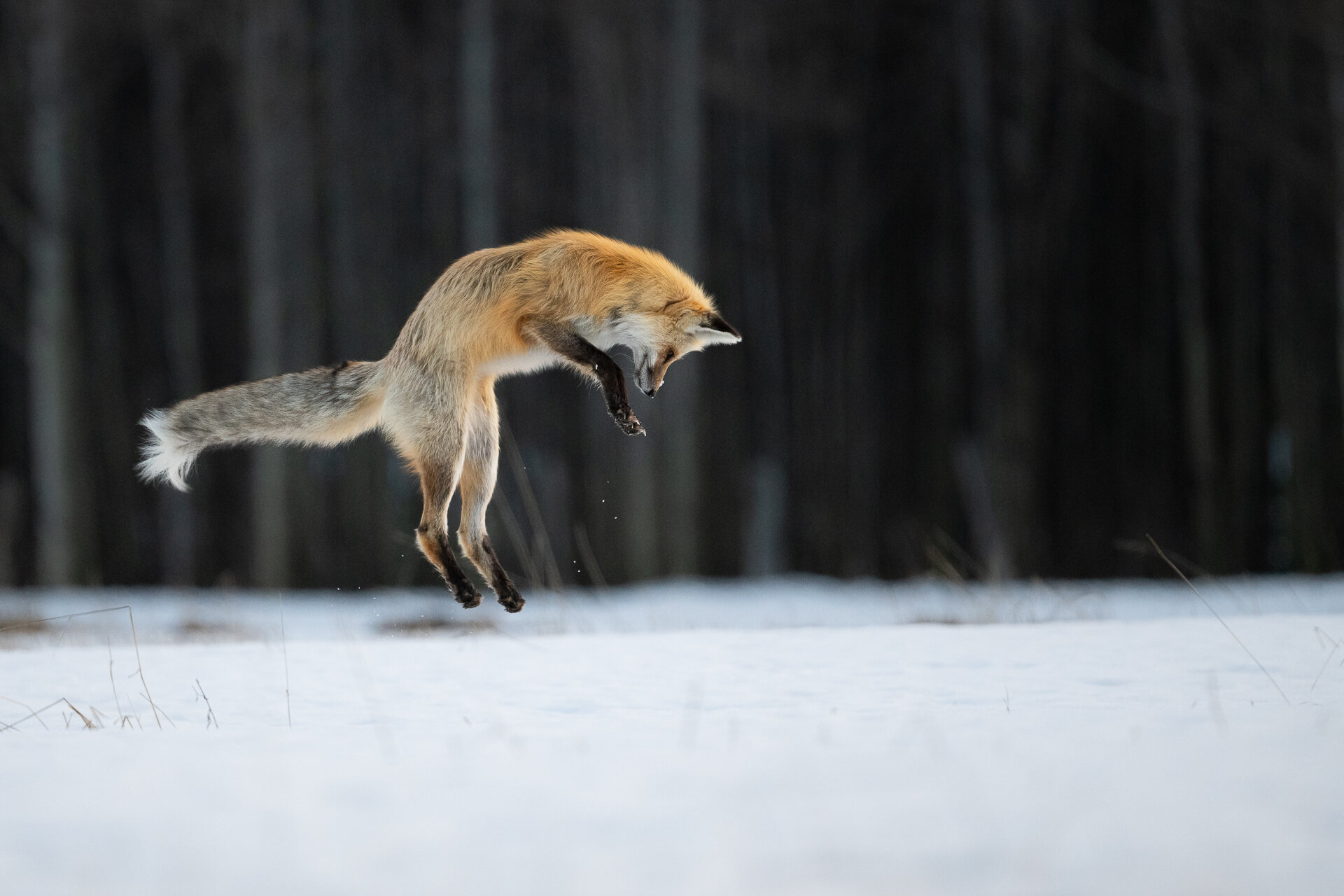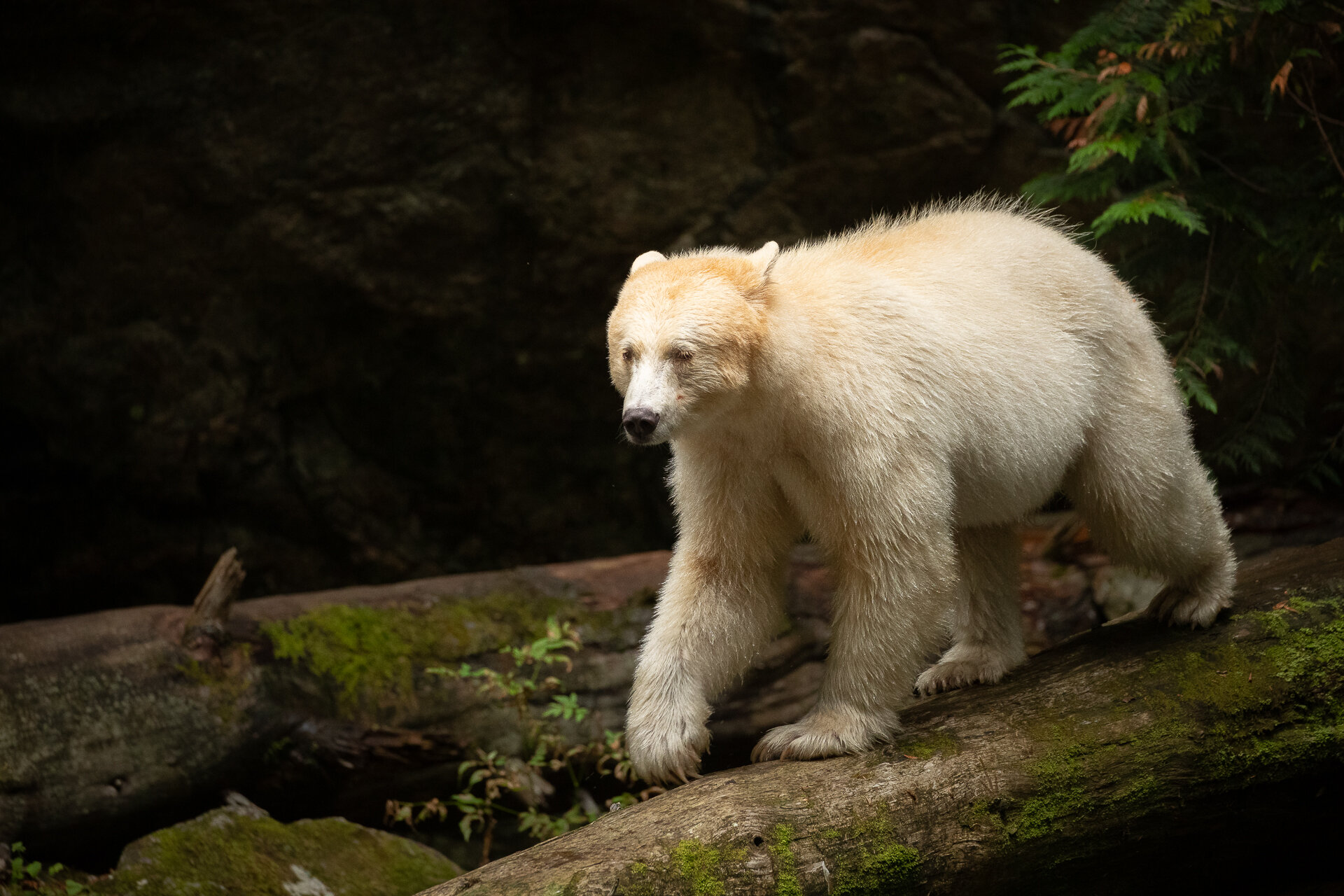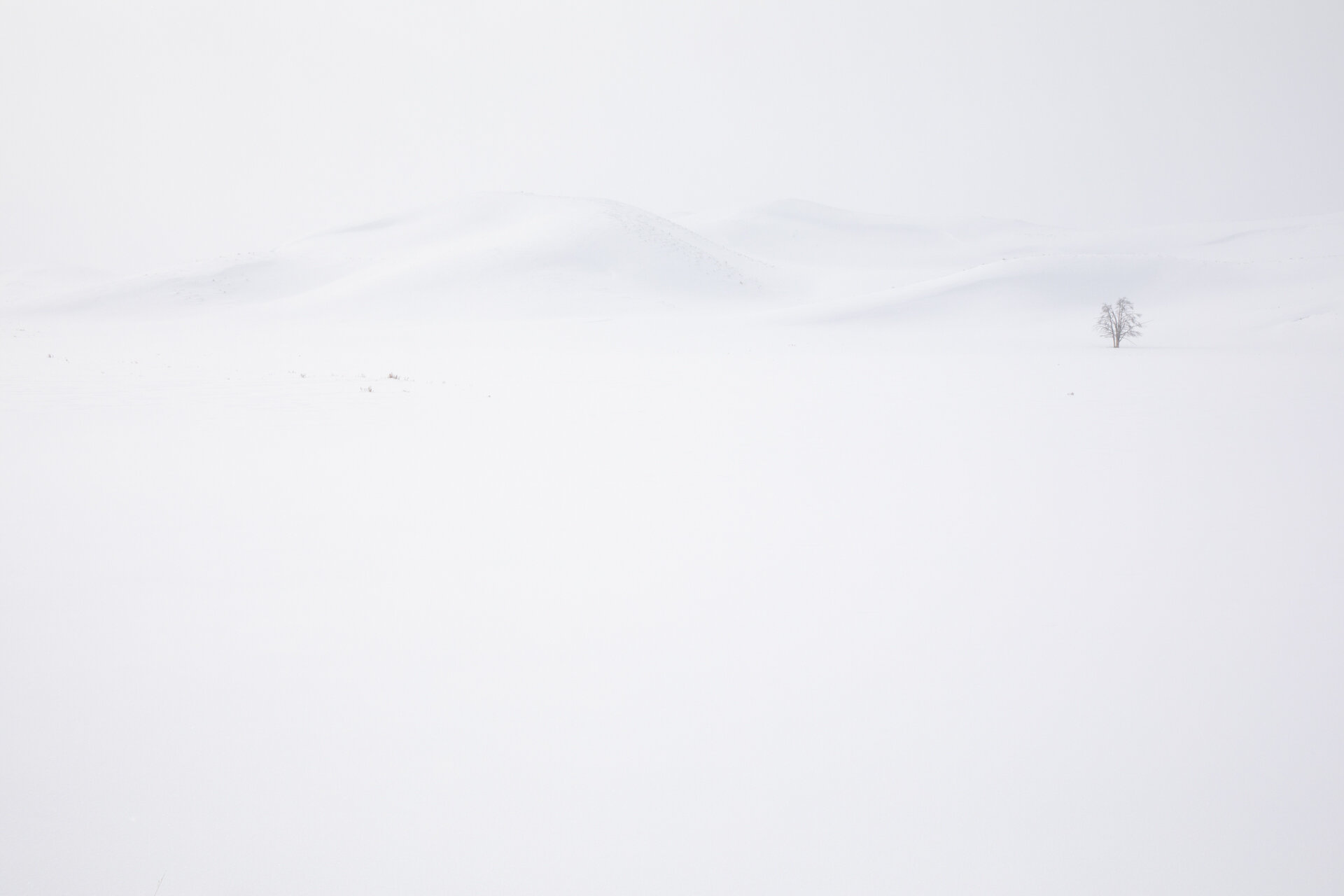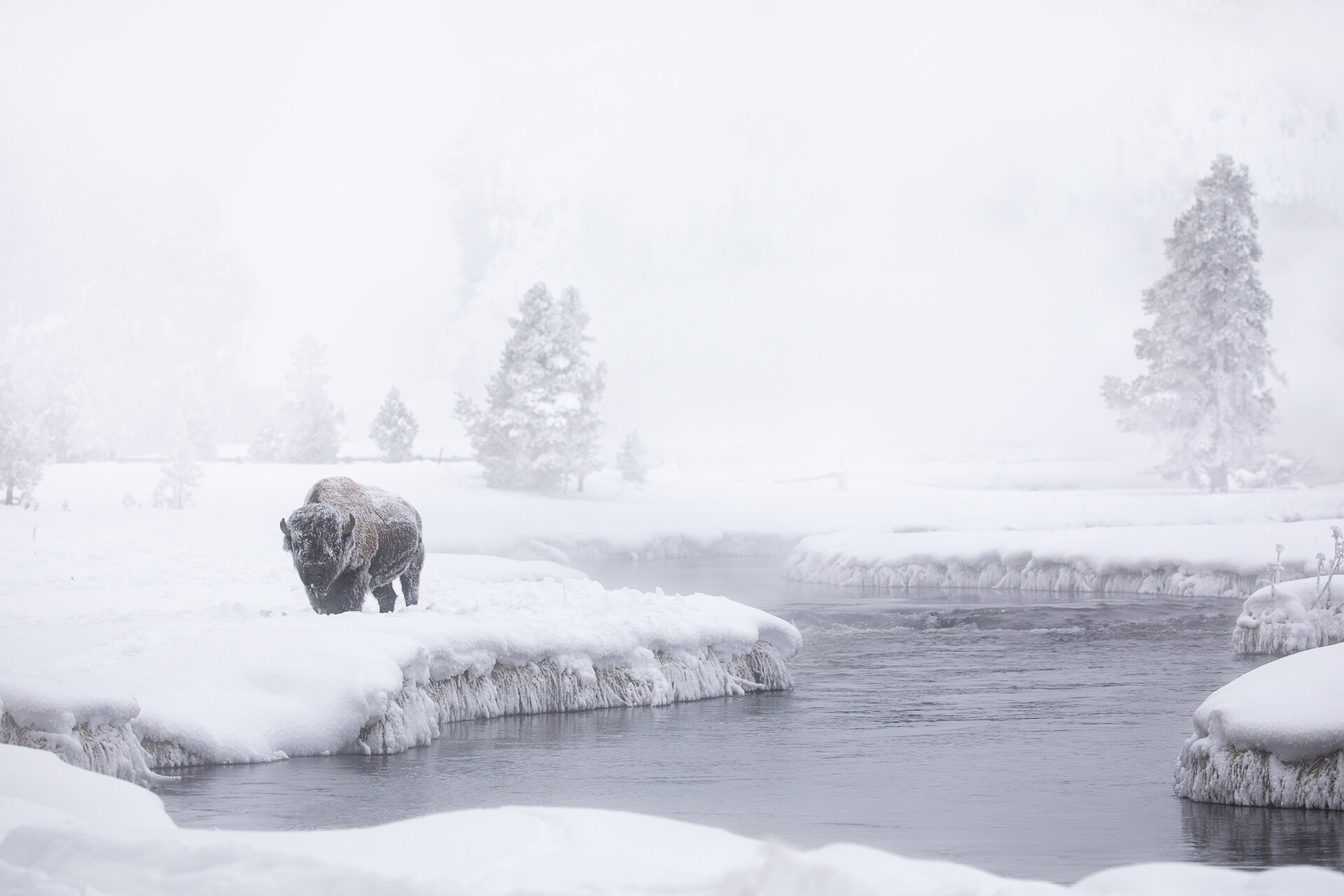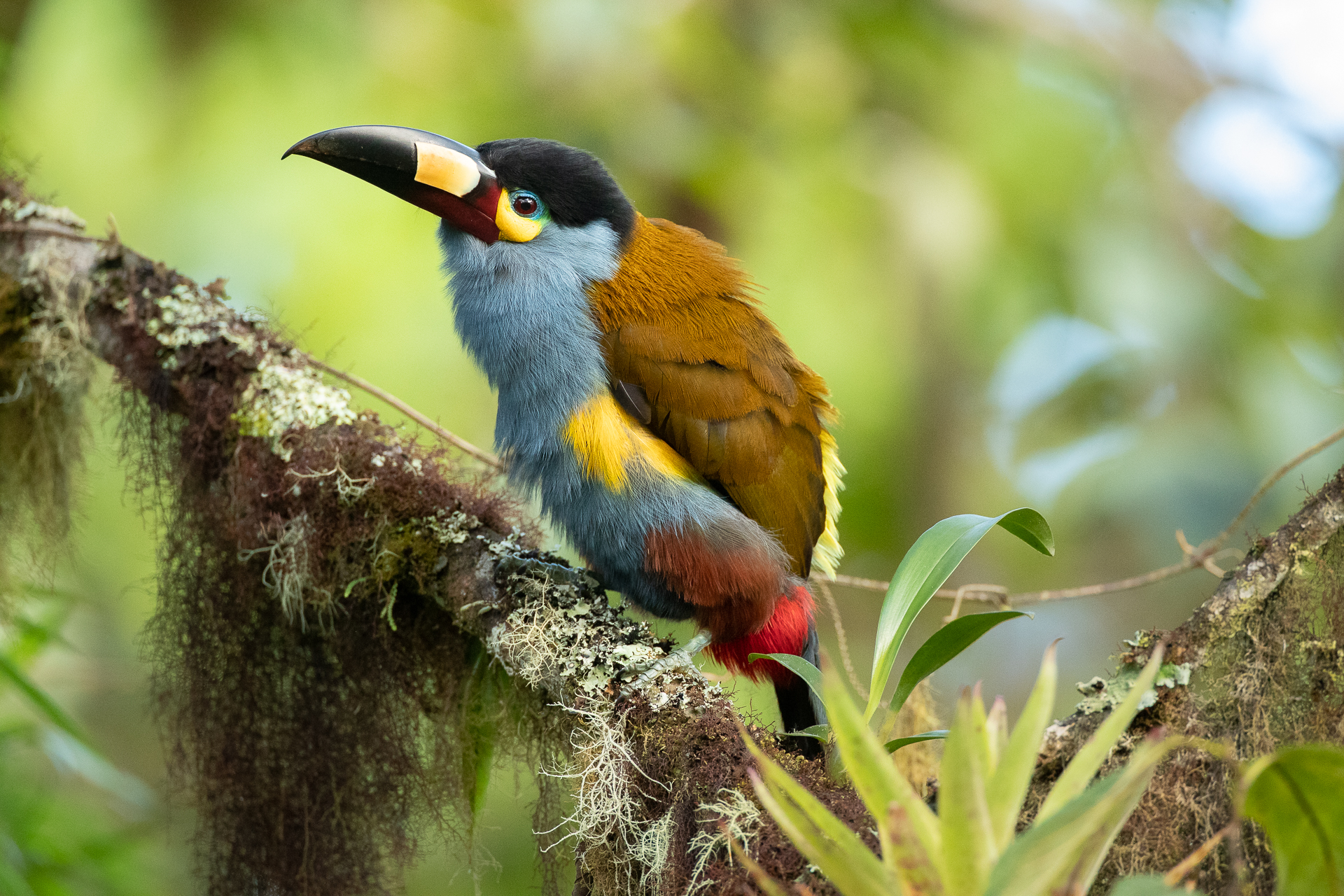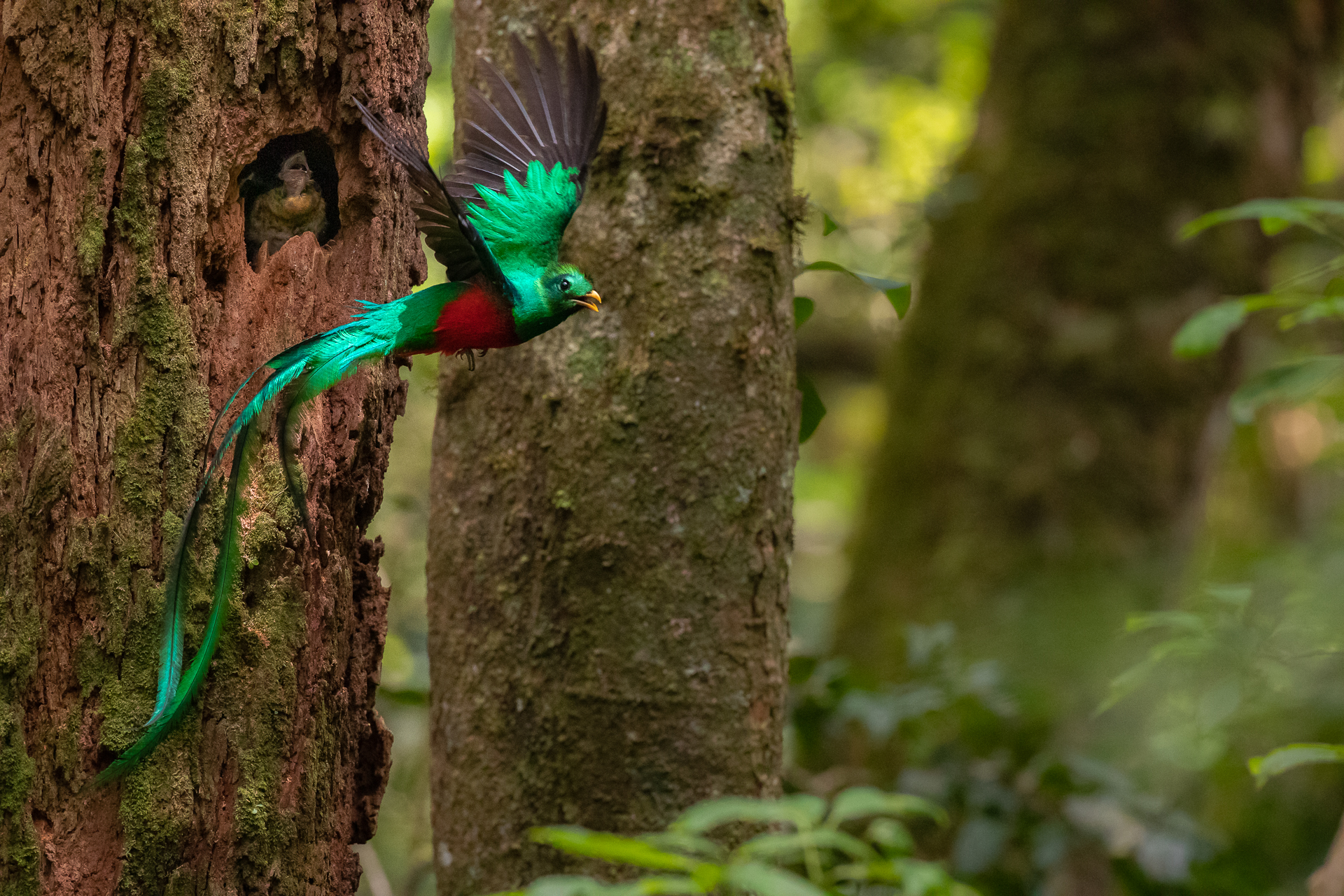For several days the fox hunted on this thin layer of snow and buried her prey in the ground nearby. Now, she has more food than she can carry in one trip. With a moth full of voles, she heads off, presumably to a den where young kits are hiding.
Spring
It’s spring, finally. The snow is rapidly loosening it’s grip on the land. Pocket gophers and voles are still hunkered down beneath the small white patches that remain, and this experienced red fox is taking advantage of the cover that provides for hunting. Stay tuned to see whether she was successful...
Canada Lynx Kitten
A Canada Lynx kitten emerges from dense forest where mom is hunting snowshoe hares. The first several decades of pine forest regrowth following a fire creates a nearly impenetrable fortress of small trees growing only inches apart. They are shade intolerant, and as they mature, the competition for light thins out out the stands. But, those early years provide great cover and habitat for snowshoe hares, and so also attracts their main predator, the Canada Lynx.
Eureka Dunes
The view from the top of the Eureka dunes in Death Valley is worth…hmm well I’m still not sure it was worth it? The grueling 1 foot forward 2 steps back scramble on all fours and the demise of my lens in a sudden sand storm was a pretty steep price. But, I’d do it again.
Fiery-billed Aracari
On a normal year I would have been returning from Costa Rica about now. This toucan is a Fiery-billed Aracari and is endemic to the region, meaning it only lives in Costa Rica and western Panama. Finding a clear vantage for a nice image of these birds is special, but my memory of this image mostly centers on the moment after taking it, as I looked down to see I was completely covered by ants from the waste down. It pays to look down everyone once in while when you’re looking for birds in canopy. Thanks to friends for violently beating my legs and back with random objects. I happily took some bruises in place or more bites.
Earth Day 2020
It’s earth day and I feel a mix of emotions as I reflect on experiences I’ve had while exploring earth’s remaining wild places. I’m deeply grateful for these moments, such as the time with this spirit bear in the Great Bear Rainforest.
And I think it is precisely because these moments are so close to my heart, that possibility of a not-so-distant world devoid of these places saddens me. As a human race our unyielding drive towards growth and progress has improved quality of life in innumerable ways, and continues to do. On many accounts this propensity is a good and beautiful thing
Yet, blindly racing down this path comes at a cost, one that our tunnel vision has kept us reluctant to see. We are using a finite resource as if it were infinite. The effect of this behavior on the planet is tangible, and clearly not sustainable. If we continue down the path we are on, there is little uncertainty about the detrimental net effect it will have on wildlife and wild places.
However, this spirit of innovation and commitment to progress also gives me hope. When coupled with a sense of responsibility and appreciation for the natural world, it has the potential to create a new and sustainable path into the future. I see more and more brilliant people and creative companies taking this challenge on with enthusiasm and optimism.
Grizzly Cub
Grizzlies give birth to cubs around February. Their first few months of life are spent huddled next to their mother for warmth in the safety of the den. Come late April or May they leave the den for good, and immediately begin learning invaluable lessons from mom. It’s an education that can last two or three years before they part ways to live on their own.
Hayden Valley in February
Working with a white canvas in Yellowstone’s Hayden Valley this week.
Lone Bison
A lone bison grazes along the Firehole in Yellowstone National Park.
Presence of the Canada Lynx
Besides the shocking disproportionate size of their feet, the calm and mesmerizing presence of the Canada Lynx is what stands out to me. Unlike most other cat species, the lynx I’ve encountered appear to be relatively comfortable with me, often sitting down and watching me before stealthily vanishing into the forest cover.
Plate-billed Mountain Toucan
The Plate-billed Mountain Toucan lives only in the west Andean slopes of Ecuador and a very small portion of Colombia. They are listed as near threatened on the IUCN red list since their range is fairly restricted, and they are victims of habitat loss and illegal pet trade.
Sword-billed Hummingbird
Here is another one of Ecuador’s 132 hummingbirds, the sword-billed; the only bird with a beak longer than its entire body! When perched, they rest with their head upright in order to balance. All of this sounds rather inconvenient right? Well maybe so, but it also provides the distinct advantage of having access to nectar from elongated flowers that the other hummingbirds cannot reach.
Long-tailed Sylph
Ecuador is home to 132 of the 300 different hummingbird species in the world. This short-billed, long-tailed hummingbird lives in the montane forest of Andes.
Quetzal Nest
It’s no wonder that this bird, with its green crest, blood red chest, and 3 foot long iridescent tail feathers, plays a significant role in Mesoamerican mythology. I watched as the male (pictured here) and female took turns feeding their two chicks days before fledging.
Andean Bear of Ecuador
An Andean bear eating puya (the plant depicted below) high in páramo. The Andean bear is the only bear species in South America, and many people, even in South America, don’t even know it exists. The accelerated rate of habitat loss and fragmentation poses a significant threat to these bears, which are listed as threatened across their range, and endangered in Ecuador. The terrain they inhabit, either the rugged high elevation páramo, or the incredibly dense cloud forest, make research efforts difficult, and so relatively little is know about this species at this time.
Santiago, a biologist with a career focus on Ecuadors endangered Andean bear, examines the remains of a freshly eaten puya. Puya, a large bromeliad, is the food of choice for the bears that live up here in the paramo at 12,000 feet.
As a park ranger, Pancho spends day after day sage-guarding these remote and rugged highlands on horseback. While the páramo is critical habit for Andean bears, it also is vital for Ecuadors long term water supply. These highlands function as a sponge of sorts, absorbing and retaining rain water, and then distributing it consistently throughout the lower elevations. As it turns out, preserving the Andean bear and its habitat is very much in the best interest of the local communities.
Andean Cock-of-the-Rock
The Andean Cock-of-the-Rock certainly is one of the strangest looking birds on the planet, and it has been high on my list to see.
I set up my camera on this lek, tucked in the forest on a small point jutting out over the confluence of two rivers, and waited. I could just barely see two males with bright red head through the trees, and suddenly a female flew by and out of sight. This changed the game. Suddenly, I could see and hear 8 males energetically bowing, strutting, jumping, and flapping their wings, all in an eager attempt to win her attention
Costa Rica
Often the best moments arrive in between destinations.
As we were racing down country roads in a hurry to get to a river where we planned to photograph, we rounded a corner to this scene. I had time for one frame, before the dog hopped up and trotted off. It’s one of my favorite moments from the past month in Central and South America, and a good reminder for me to that it always pays to be present and aware.
Shadow Show
One of the most striking shadow displays I’ve ever seen took place as this storm moved over the Teton range.
Great Grey Owl
Sightings of the Phantom of the North have been rare in the ecosystem over the past few years, as the population is at a low point. So having the opportunity to sit with friends, and this male Great Grey as he waited out a snow storm was a real privilege.
Spring Grizzly
It’s always so exciting to see my first grizzly bear each year...5 months is a long time to go without bears. This male looks huge after hibernating, so I can only imagine what he looked like going into the den. In hibernation bears rely entirely on fat reserves, and in 5 or 6 months of laying around, they lose virtually no muscle mass.

